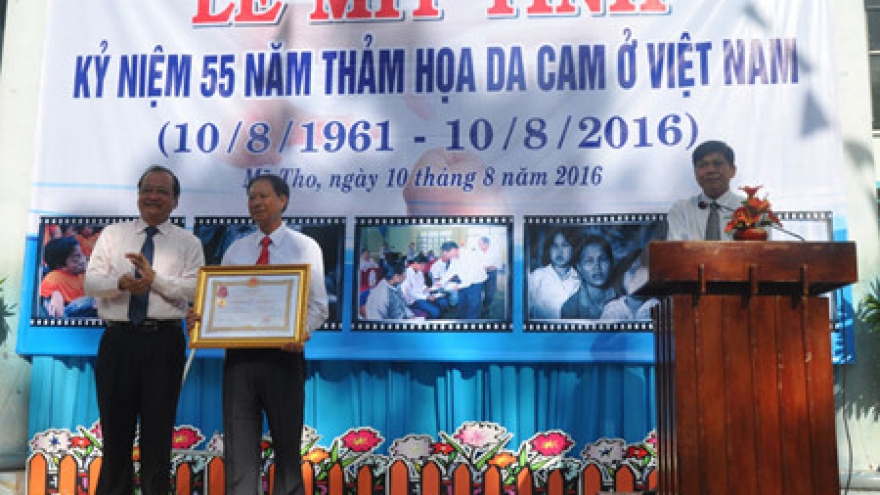More people back Tran To Nga in AO/dioxin lawsuit
More than 20,000 people in the Mekong Delta province of Soc Trang have recently signed to support Tran To Nga, who is pursuing a lawsuit against US chemical firms to demand justice for Agent Orange (AO)/dioxin victims, raising the total number of approval signatures in the locality to over 40,000.
 |
At the event, Nga recalled the days when she worked as a reporter of the Vietnam News Agency in the southeastern battlefield where she was exposed to the toxic chemical.
She also shared difficulties in pursuing the lawsuit, which, however, has received the whole-hearted support of domestic and foreign friends.
Expressing her thanks for the support of people in Soc Trang, Nga said she wishes that people at home and abroad, and socio-political organisations will continue to back her efforts.
While in Soc Trang, Nga visited Do Thuy Duong, an AO victim in My Xuyen town, My Xuyen district.
In May 2014, Tran To Nga, 74, filed a lawsuit against 26 US chemical firms for producing chemical toxins sprayed by the US army in the war in Vietnam, causing serious consequences for the community, her and her children.
Between 1966 and 1970, she had to work and live in some of the most heavily AO/dioxin affected areas in southern Vietnam such as Cu Chi, Ben Cat and along the Ho Chi Minh Trail, ultimately experiencing the effects of contamination herself. Among her three children, the first child died of heart defects and the second suffers from a blood disease.
In 2009, Nga, who contracted a number of acute diseases, appeared as a witness at the Court of Public Opinion in Paris against the US chemical companies.
From 1961-1971, US troops sprayed more than 80 million litres of herbicides - 44 million litres of which were AO, containing nearly 370 kilograms of dioxin - over southern Vietnam.
As a result, around 4.8 million Vietnamese were exposed to the toxic chemical. Many of the victims have died, while millions of their descendants are living with deformities and diseases as a direct result of the chemical’s effects.



